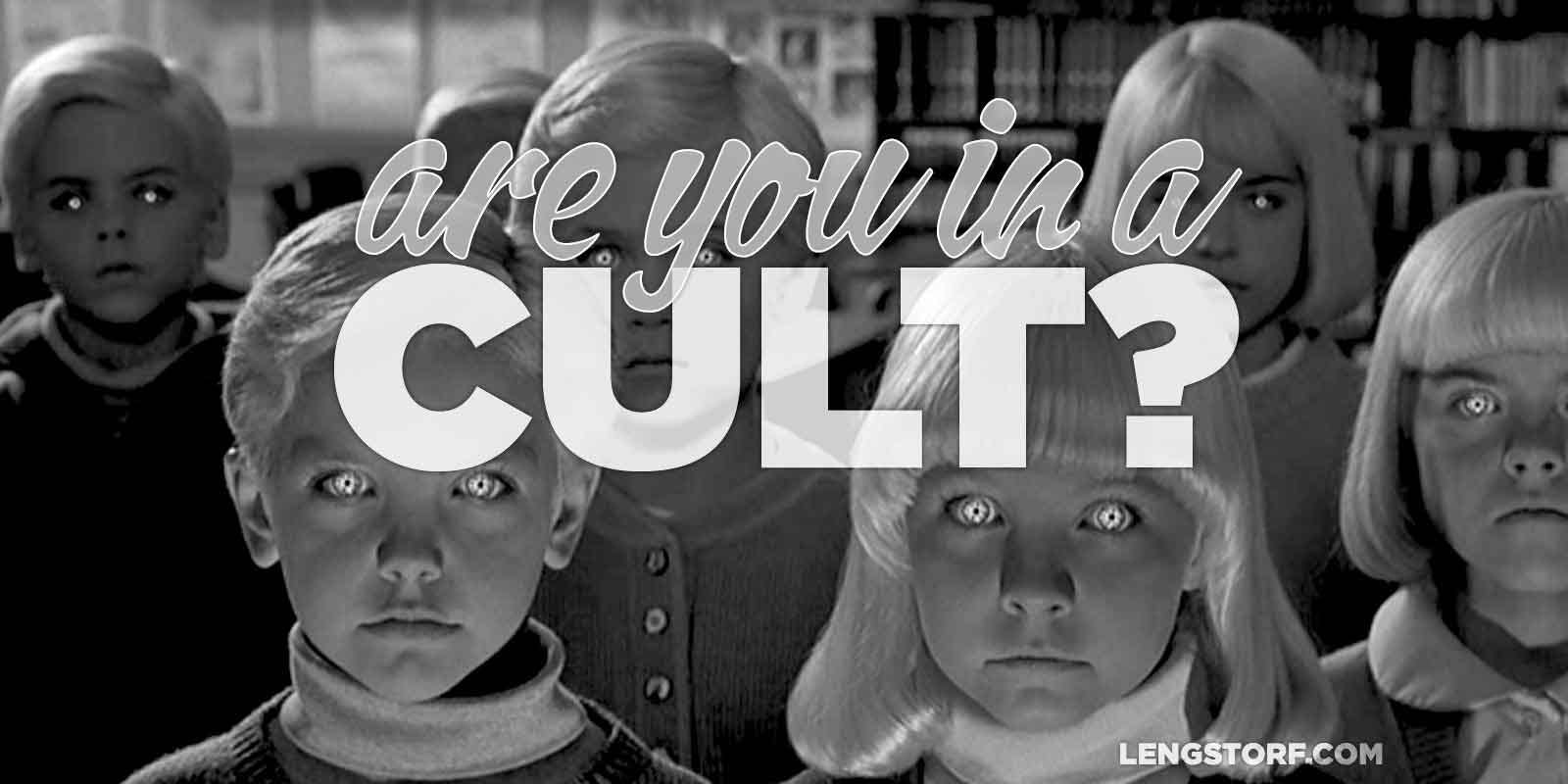
First check out this article so that this article will make more sense.
In this article we will see a checklist of the social traits of a cult.
What are some signs and practices of a cult?
by Matt Slick
There have been many serious studies on the dynamics of cults and behavior of people within those cults. Following is a representative list of characteristics common in cult groups. Not all cults hold to every item.
We have to be careful when assigning cult-like behavior to any group. Just as beauty is in the eye of the beholder, so to, cult-like behavior is subjective. Generally, it takes a trained person who can identify unhealthy patterns and teachings as compared to healthy ones and can then identify a cult. Furthermore, cult-like behavior is more commonly identified through excessive control, manipulation, and esoteric teaching of a group where the group’s members are often isolated and indoctrinated into special teachings and practices.
Social aspects of cult-like behavior
For a group to be a cult in the social sense, many of the following characteristics would have to be present. For a group to be a cult in the doctrinal sense, essentials (in this case of the Christian faith) would have to be violated. Some of the characteristics are listed below.
- Submission:
- Complete, almost unquestioned trust in the leadership.
- Leaders are often seen as prophets, apostles, or special individuals with unusual connections to God. This helps a person give themselves over psychologically to trusting someone else for their spiritual welfare.
- Increased submission to the leadership is rewarded with additional responsibilities and/or roles, and/or praises, increasing the importance of the person within the group.
- Exclusivity
- Their group is the only true religious system, or one of the few true remnants of God’s people.
- Persecution complex
- Us against them mentality. Therefore, when someone (inside or outside of the group) corrects the group in doctrine and/or behavior, it is interpreted as persecution, which then is interpreted as validation.
- Control
- Control of members’ actions and thinking through repeated indoctrination and/or threats of loss of salvation, or a place to live, or receiving curses from God, etc.
- Isolation
- Minimizing contact of church members with those outside the group. This facilitates a further control over the thinking and practices of the members by the leadership.
- Love Bombing
- Showing great attention and love to a person in the group by others in the group, to help transfer emotional dependence to the group.
- Special Knowledge
- Instructions and/or knowledge are sometimes said to be received by a leader(s) from God. This leader then informs the members.
- The Special Knowledge can be received through visions, dreams, or new interpretations of sacred scriptures such as the Bible.
- Indoctrination
- The teachings of the group are repeatedly drilled into the members, but the indoctrination usually occurs around Special Knowledge.
- Salvation
- Salvation from the judgment of God is maintained through association and/or submission with the group, its authority, and/or its Special Knowledge.
- Group Think
- The group’s coherence is maintained by the observance to policies handed down from those in authority.
- There is an internal enforcement of policies by members who reward “proper” behavior, and those who perform properly are rewarded with further inclusion and acceptance by the group.
- Cognitive Dissonance
- Avoidance of critical thinking and/or maintaining logically impossible beliefs and/or beliefs that are inconsistent with other beliefs held by the group.
- Avoidance of and/or denial of any facts that might contradict the group’s belief system.
- Shunning
- Those who do not keep in step with group policies are shunned and/or expelled.
- Gender Roles
- Control of gender roles and definitions.
- Severe control of gender roles sometimes leads to sexual exploitation.
- Appearance Standards
- Often a common appearance is required and maintained. For instance, women might wear prairie dresses, and/or their hair in buns, and/or no makeup, and/or the men might all wear white short-sleeved shirts, and/or without beards, or all wear beards.
Source: https://carm.org/signs-practices-of-a-cult
When your church/chapter checks off all if not most of the things in the checklist then it is clearly a cult.


No Comments Yet